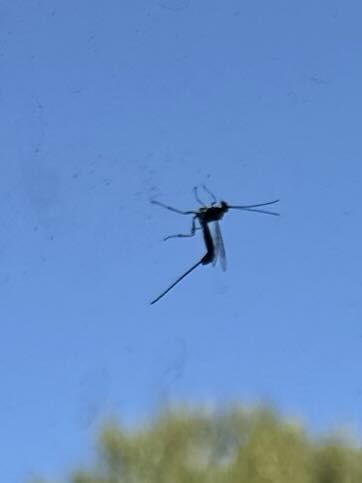Crane Fly (likely a male)
Scientific Name: Tipulidae (family)
Order & Family: Order Diptera, Family Tipulidae
Size: Typically 10-25 mm (0.4-1.0 inches) in body length, with a wingspan often larger, though some species can be much larger.

Natural Habitat
Found in various habitats, especially near water sources, woodlands, grasslands, and areas with lush vegetation where larvae can find moist soil or decaying organic matter.
Diet & Feeding
Adult crane flies generally feed on nectar, honeydew, or don't feed at all (if their lifespan is very short). The larval stage (leatherjackets) are typically herbivorous or detritivorous, feeding on decaying leaf litter, plant roots, or other organic matter in soil.
Behavior Patterns
Adults are often seen flying clumsily or resting on surfaces. They are most active during dusk or at night. Their long legs are easily shed when caught, a defense mechanism. The prominent features in the image (long body, slender legs, and elongated 'tail-like' structure likely an abdomen with claspers) suggest a male crane fly.
Risks & Benefits
Crane flies are generally harmless to humans. They do not bite or sting. The larvae, also known as 'leatherjackets', can sometimes cause damage to lawns and crops by feeding on roots, especially in high numbers. However, they also play a beneficial role in ecosystems by breaking down organic matter. Adults sometimes serve as a food source for birds and other insectivores.
Identified on: 9/23/2025